- Joined
- Sep 8, 2019
- Messages
- 4,392
I have done a bit of Imperial threading, but I will be doing a lot of metric threading now (for fun!).
I started out with 1” steel hex, wanting to do M16-2.0. I overshot the diameter because I was confused about how to read an analog metric micrometer. So on to M14-2.0, then.
I left the half nut engaged throughout the whole operation. This is also the first time that I have had my DRO on mm.
I won’t be able to get a nut to test it for about 6 hours.
Here are some pictures in case anybody has any constructive criticism, particularly with regard to the compound being set at the correct angle. I see some chatter.
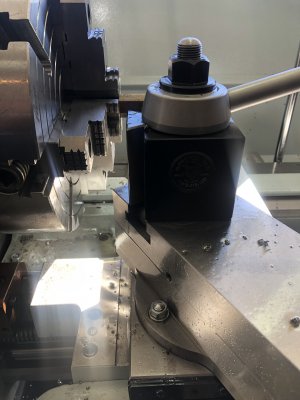
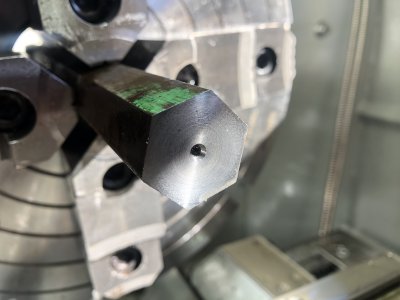
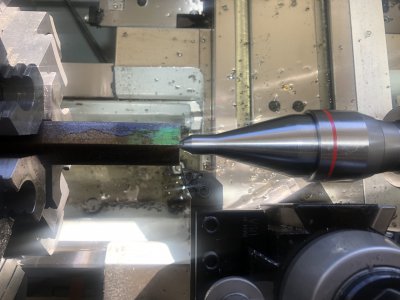
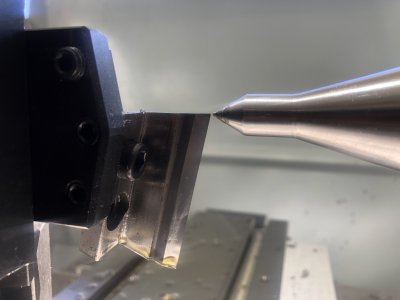
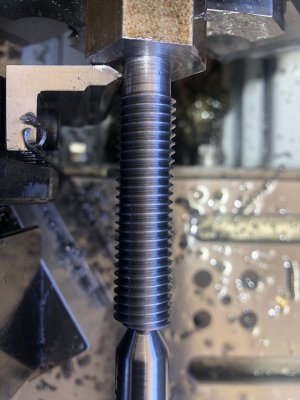
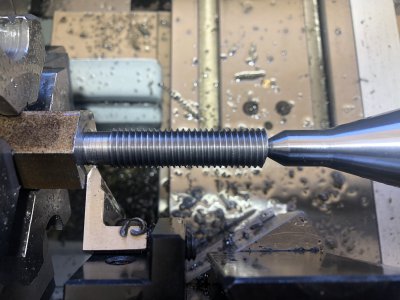
I started out with 1” steel hex, wanting to do M16-2.0. I overshot the diameter because I was confused about how to read an analog metric micrometer. So on to M14-2.0, then.
I left the half nut engaged throughout the whole operation. This is also the first time that I have had my DRO on mm.
I won’t be able to get a nut to test it for about 6 hours.
Here are some pictures in case anybody has any constructive criticism, particularly with regard to the compound being set at the correct angle. I see some chatter.







